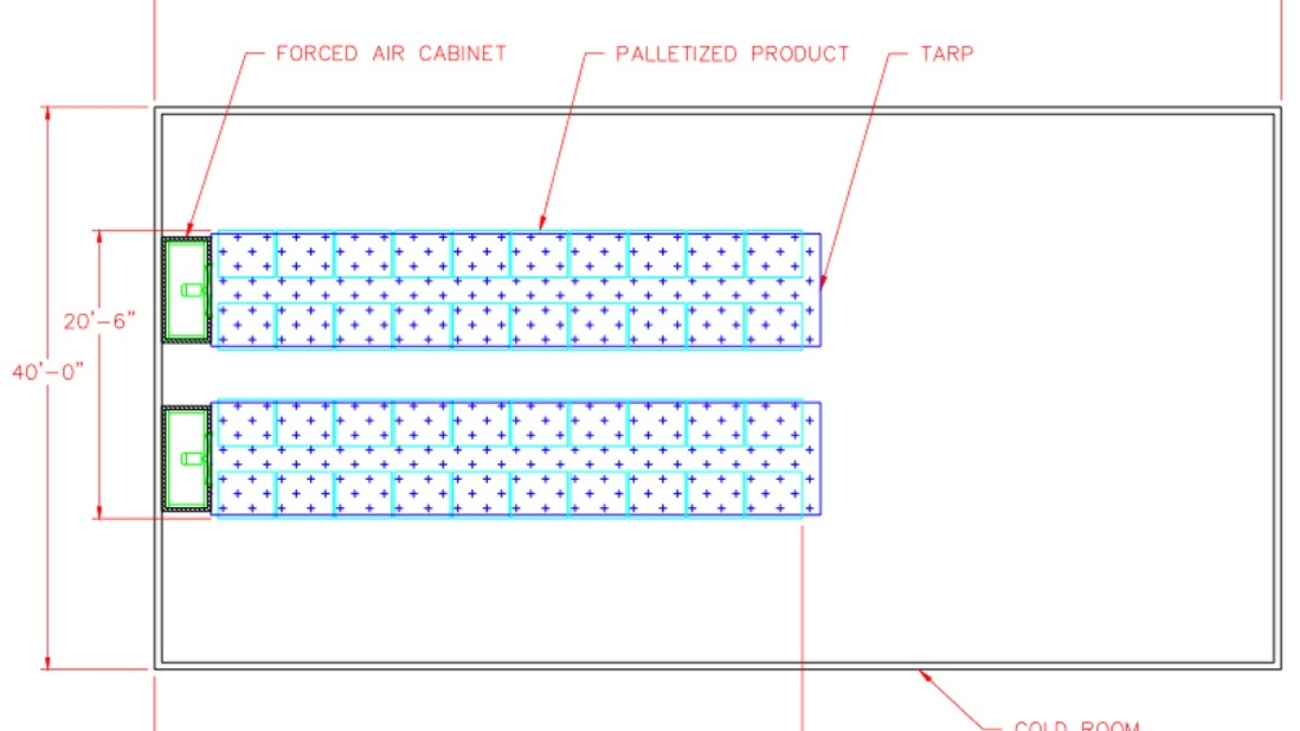Oranges are the most cultivated fruit in the world. In 2010 alone there were an estimated 68.3 million metric tons of oranges grown. They are extremely popular when eaten fresh, are common ingredients in juices, desserts, preserves, and other dishes, and are even valued for their rind. The taste and quality of oranges will naturally depend on how they are cooled and stored after harvest. What follows is a look at some key orange-related facts, considerations when cooling and storing oranges, and the best cooling and storing methods to use for optimal results.
General Facts About Oranges
When people refer to oranges they are typically referring to the fruit with the scientific name Citrus sinensis, which is also known as the sweet orange. Citrus aurantium is a closely related variant known as the bitter orange. In fact all subspecies of the Citrus genus – including lemons, limes, and grapefruit as well as oranges – are interfertile, meaning they can be crossed with each other, and thus there are a huge array of different cultivars. The orange is believed to have originated as a hybrid of the pomelo and mandarin.
Oranges have been actively grown and cultivated since ancient times and are found in tropical and subtropical regions throughout the world. Oranges grow on evergreen trees with an average height measuring about 30ft-33ft depending on the cultivar with variations. The size of the fruit varies by cultivar and is typically spherical or oblong in shape.
General Information About Cooling and Storing Oranges
Unlike some other fruits and vegetables, oranges do not continue to ripen after they have been harvested. That makes it important for only mature fruit to be picked. Additionally care should be taken to avoid damaging the peel when picking the fruit because oranges with damaged peel will degrade and lose quality much more quickly than intact oranges. What follows is a description of some key cooling and storage facts.
Temperature – Oranges should be stored at about 38°F to 48°F. Warmer temperatures will result in more rapid loss of quality while prolonged exposure to temperatures below 38°F may result in freeze damage. The optimum temperature within that range of 38°F to 48°F will vary slightly depending on the initial condition of the oranges as well as their particular cultivar.
Respiration and Degradation – Like most fruits and vegetables, oranges will continue to respire and thus gradually degrade after they have been harvested. Since respiration and degradation rates are faster at higher temperatures it is advisable to pre-cool oranges while they are still in the field if a more thorough cooling will be delayed.
Relative Humidity – Oranges thrive at a relative humidity of about 90% – 95%. Lower relative humidity may result in moisture loss while higher relative humidity may elevate the risk of certain fungal attacks.
Storage – Oranges should be stored in well-ventilated cartons to allow for good airflow and thus also thorough, uniform cooling. It is important to avoid over-filling containers as this could not only interfere with airflow but also result in physical damage to the fruit.
Shelf Life – Under ideal cooling and storage conditions oranges have a shelf life of up to 2-3 months.
Ethylene – Ethylene is a gas and is a respiration byproduct that hastens ripening and decay. Oranges themselves have a low ethylene production; however, they have a moderate sensitivity to it. Since oranges do not ripen per se, or otherwise increase in quality, after harvest the only effect of ethylene on them is decay. For this reason it is advisable to keep oranges separated from other fruits and vegetables that produce higher concentrations of ethylene and which might thus hasten quality loss in the oranges.
Methods of Cooling Oranges
Room Cooling – Room cooling involves placing the oranges in a refrigerated room and allowing them to gradually acclimate to ambient temperatures. For this method to be effective it is important that the oranges be packed in cartons with good airflow.
Forced-Air Cooling – Room cooling may not be ideal in some circumstances because cooling is more gradual and takes a long time. Instead the oranges may be subjected to forced-air cooling as an alternate method. This involves placing the oranges in a cooler as with room cooling but also arranging them around a fan that will pull cold air through the oranges, thereby greatly increasing the speed and efficacy of cooling.
Hydrocooling – Hydrocooling involves rapidly submerging the oranges in near freezing water as a way to very quickly lower their temperature. This is a very effective way of removing field heat and preparing the oranges for more long-term cooling such as room cooling or forced-air cooling. It is not economical to fully chill oranges using hydrocooling because the cooling load is high after the initial field temperatures have been removed.
SEMCO/SEMCOLD LLC is an industry-leader in providing high quality, cost effective cooling and storage solutions for oranges and other produce. Our systems are fully customizable and can be altered as needed to best fit the capacity demands and other needs of our customers’. Let us help you keep your oranges looking and tasting their best.

